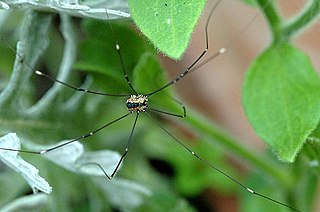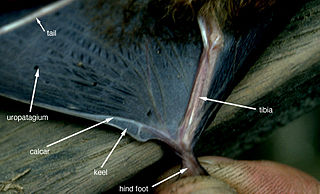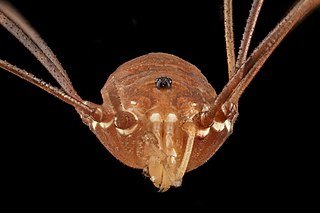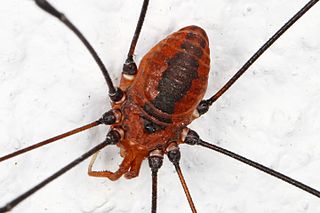
The calcarine sulcus is an anatomical landmark located at the caudal end of the medial surface of the brain of humans and other primates. Its name comes from the Latin "calcar" meaning "spur". It is very deep and known as a complete sulcus.

CalCars was a charitable, non-profit organization founded in 2002 to promote plug-in hybrid electric vehicles (PHEVs) as a key to addressing oil dependence and global warming both nationally and internationally. It was active until 2010, when the first mass-produced PHEVs arrived. CalCars envisioned millions of plug-in hybrid electric vehicles, charged by off-peak electricity from renewable energy sources, and with their internal combustion engines powered by low-carbon alternative fuels, as a way to significantly reduce greenhouse gases that come from transportation.

Leiobunum is a genus of the harvestman family Sclerosomatidae with more than a hundred described species. Contrary to popular belief, they are not spiders, although they share a resemblance. They are arachnids, in the order Opiliones, harvestmen. Species in Leiobunum tend to have relatively long legs compared with other harvestmen, and some species are gregarious.

Leiobunum rotundum is a species of harvestman. It is found in the western Old World.

The calcar, also known as the calcaneum, is the name given to a spur of cartilage arising from inner side of ankle and running along part of outer interfemoral membrane in bats, as well as to a similar spur on the legs of some arthropods.
Eptesicus lobatus is a species of bats of genus Eptesicus and family Vespertilionidae.
Leiobunum townsendi is a species of harvestman in the family Sclerosomatidae. It is found in North America.
Tricella is a genus of robber flies in the family Asilidae. There is at least one described species in Tricella, T. calcar.
Leiobunum bracchiolum is a species of harvestman in the family Sclerosomatidae. It is found in North America.
Leiobunum bimaculatum is a species of harvestman in the family Sclerosomatidae. It is found in North America.
Leiobunum crassipalpe is a species of harvestman in the family Sclerosomatidae. It is found in North America.

Leiobunum nigropalpi is a species of harvestman in the family Sclerosomatidae. It is found in North America.
Leiobunum relictum is a species of harvestman in the family Sclerosomatidae. It is found in North America.

Leiobunum flavum is a species of harvestman in the family Sclerosomatidae. It is found in North America.
Leiobunum politum is a species of harvestman in the family Sclerosomatidae. It is found in North America.

Leiobunum vittatum is a species of harvestman in the family Sclerosomatidae. It is found in North America.

Leiobunum aldrichi is a species of harvestman in the family Sclerosomatidae. It is found in North America.
Leiobunum euserratipalpe is a species of harvestman in the family Sclerosomatidae. It is found in North America.

Leiobunum verrucosum is a species of harvestman in the family Sclerosomatidae. It is found in North America.
Leiobunum uxorium is a species of harvestman in the family Sclerosomatidae. It is found in North America.









